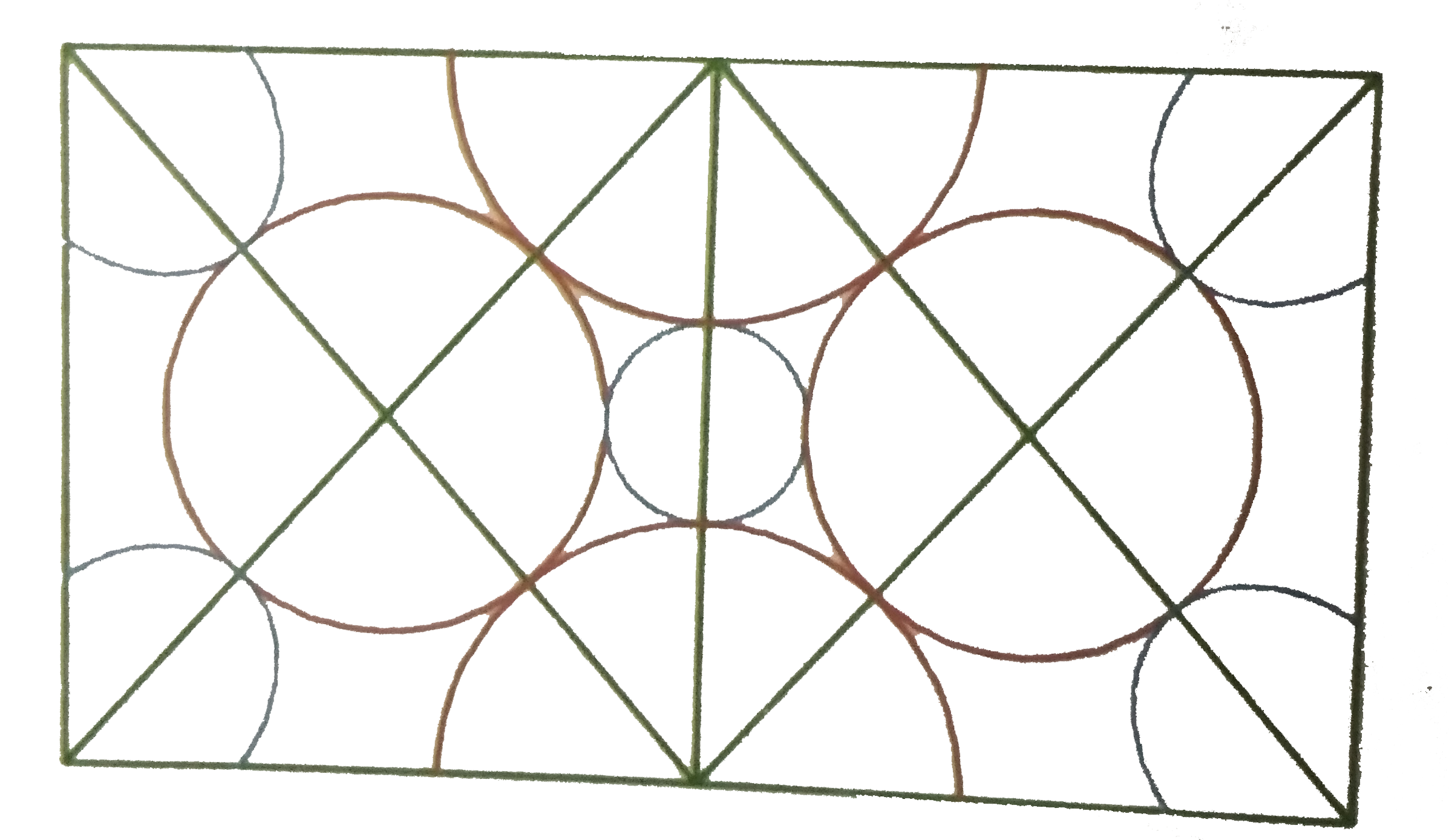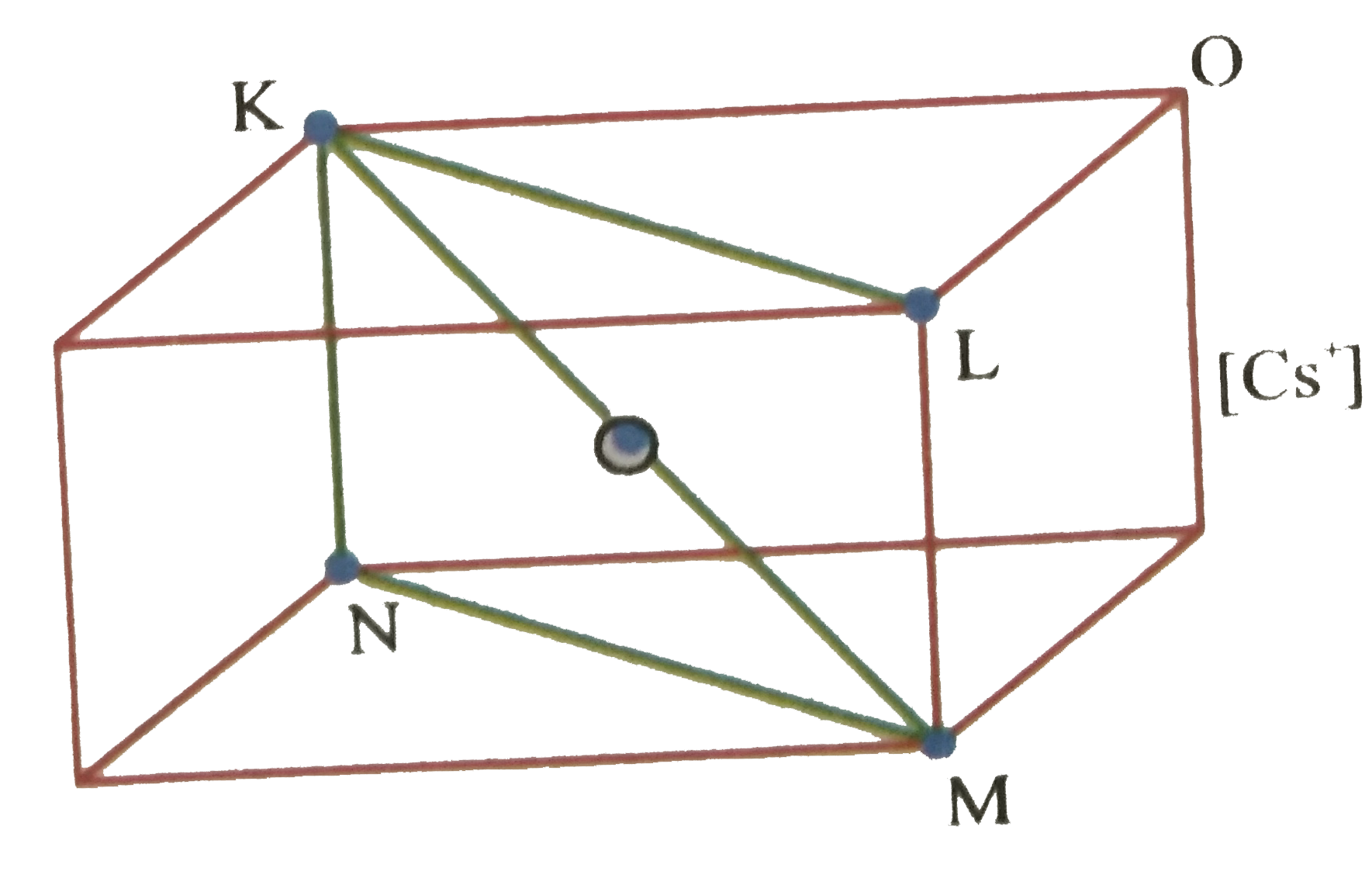The CsCl type structure is exhibited by alkali halides only when the radius of the cation is large enough to keep touching its eight nearst neighbour aniion. Below what minimum raiton of cation of anion radii (r+/r−) this contact is prevented
0.225
0.414
0.632
0.732
The correct Answer is:D
Step by step video, text & image solution for The CsCl type structure is exhibited by alkali halides only when the radius of the cation is large enough to keep touching its eight nearst neighbour aniion. Below what minimum raiton of cation of anion radii (r^(+)//r^(-)) this contact is prevented by Chemistry experts to help you in doubts & scoring excellent marks in Class 11 exams.
Updated on:21/07/2023Topper's Solved these Questions
- SOLID STATEBOOK - NARENDRA AWASTHICHAPTER - SOLID STATEEXERCISE - Level 1 (Q.33 To Q.62)
1 Videos
- SOLID STATEBOOK - NARENDRA AWASTHICHAPTER - SOLID STATEEXERCISE - Level 3 - One Or More Answers Are Correct
1 Videos
- IONIC EEQUILIBRIUMBOOK - NARENDRA AWASTHICHAPTER - IONIC EEQUILIBRIUMEXERCISE - Exercise
196 Videos
- STOICHIOMETRYBOOK - NARENDRA AWASTHICHAPTER - STOICHIOMETRYEXERCISE - Level 3 - Subjective Problems
20 Videos
Similar Questions
Early crystallographers had trouble solving the structures of inorganic solids using X-ray diffraction because some of the mathematical tools for analyzing the data had not yet been developed. Once a trial structure was proposed, it was relatively easy to calculate the diffraction pattern, but it was difficult to go the other way (from the diffraction pattern to the structure) if nothing was known a priori about the arrangement of atoms in the unit cell. It was important to develop some guidelines for guessing the coordination numbers and bonding geometries of atoms in crystals. The first such rules were proposed by Linus Pauling, who considered how one might pack together oppositely charged spheres of different radii. Pauling proposed from geometric considerations that the quality of the "fit" depended on the radius ratio of the anion and the cation.
If the anion is considered as the packing atom in the crystal, then the smaller cation fills interstitial sites ("holes"). Cations will find arrangements in which they can contact the largest number of anions. If the cation can touch all of its nearest neighbour anions then the fit is good. If the cation is too small for a given site, that coordination number will be unstable and it will prefer a lower coordination structure. The table below gives the ranges of cation/anion radius ratios that give the best fit for a given coordination geometry.

A solid AB has square planar structure. If the radius of cation A+ is 120pm,Calculate the maximum possible value of anion B−
View SolutionEarly crystallographers had trouble solving the structures of inorganic solids using X-ray diffraction because some of the mathematical tools for analyzing the data had not yet been developed. Once a trial structure was proposed, it was relatively easy to calculate the diffraction pattern, but it was difficult to go the other way (from the diffraction pattern to the structure) if nothing was known a priori about the arrangement of atoms in the unit cell. It was important to develop some guidelines for guessing the coordination numbers and bonding geometries of atoms in crystals. The first such rules were proposed by Linus Pauling, who considered how one might pack together oppositely charged spheres of different radii. Pauling proposed from geometric considerations that the quality of the "fit" depended on the radius ratio of the anion and the cation.
If the anion is considered as the packing atom in the crystal, then the smaller cation fills interstitial sites ("holes"). Cations will find arrangements in which they can contact the largest number of anions. If the cation can touch all of its nearest neighbour anions then the fit is good. If the cation is too small for a given site, that coordination number will be unstable and it will prefer a lower coordination structure. The table below gives the ranges of cation/anion radius ratios that give the best fit for a given coordination geometry.

A "good fit" is considered to be one where the cation can touch:
View Solution
Knowledge Check
The CsCl structure is observed in alkali halides only when the radius of the cation is sufficiently large to keep its eight nearest-neighbour anions from touching. What minimum value of r+/r− is needed to prevent this contact?
A0.155B0.225C0.414D0.732Early crystallographers had trouble solving the structures of inorganic solids using X-ray diffraction because some of the mathematical tools for analyzing the data had not yet been developed. Once a trial structure was proposed, it was relatively easy to calculate the diffraction pattern, but it was difficult to go the other way (from the diffraction pattern to the structure) if nothing was known a priori about the arrangement of atoms in the unit cell. It was important to develop some guidelines for guessing the coordination numbers and bonding geometries of atoms in crystals. The first such rules were proposed by Linus Pauling, who considered how one might pack together oppositely charged spheres of different radii.
Pauling proposed from geometric considerations that the quality of the "fit" depended on the radius ratio of the anion and the cation.
If the anion is considered as the packing atom in the crystal, then the smaller catin fills interstitial sites ("holes"). Cations will find arrangements in which they can contact the largest number of anions. If the cation can touch all of its nearest neighbour anions then the fit is good. If the cation is too small for a given site, that coordination number will be unstable and it will prefer a lower coordination structure. The table below gives the ranges of cation/anion radius ratios that give the best fit for a given coordination geometry.
Coordiantion numberGeometryρ=rcationramion2linear0−0.1553triangular0.155−0.2254tetrahedral0.225−0.4144square planar0.414−0.7326octahedral0.414−0.7328cubic0.732−1.012cuboctahedral1.0
(Source : Ionic Radii and Radius Ratios. (2021, June 8). Retrieved June 29, 2021, from https://chem.ibretexts.org/@go/page/183346)
A solid AB has square planar structure. If the radius of cation A+ is 120 pm, calculate the maximum possible value of anion B−.A240 pmB270 pmC280 pmD290 pmEarly crystallographers had trouble solving the structures of inorganic solids using X-ray diffraction because some of the mathematical tools for analyzing the data had not yet been developed. Once a trial structure was proposed, it was relatively easy to calculate the diffraction pattern, but it was difficult to go the other way (from the diffraction pattern to the structure) if nothing was known a priori about the arrangement of atoms in the unit cell. It was important to develop some guidelines for guessing the coordination numbers and bonding geometries of atoms in crystals. The first such rules were proposed by Linus Pauling, who considered how one might pack together oppositely charged spheres of different radii.
Pauling proposed from geometric considerations that the quality of the "fit" depended on the radius ratio of the anion and the cation.
If the anion is considered as the packing atom in the crystal, then the smaller catin fills interstitial sites ("holes"). Cations will find arrangements in which they can contact the largest number of anions. If the cation can touch all of its nearest neighbour anions then the fit is good. If the cation is too small for a given site, that coordination number will be unstable and it will prefer a lower coordination structure. The table below gives the ranges of cation/anion radius ratios that give the best fit for a given coordination geometry.
Coordiantion numberGeometryρ=rcationramion2linear0−0.1553triangular0.155−0.2254tetrahedral0.225−0.4144square planar0.414−0.7326octahedral0.414−0.7328cubic0.732−1.012cuboctahedral1.0
(Source : Ionic Radii and Radius Ratios. (2021, June 8). Retrieved June 29, 2021, from https://chem.ibretexts.org/@go/page/183346)
The radius of Ag+ ion is 126 pm and of I− ion is 216 pm. The coordination number of Ag+ ion is :A2B3C6D8
Early crystallographers had trouble solving the structures of inorganic solids using X-ray diffraction because some of the mathematical tools for analyzing the data had not yet been developed. Once a trial structure was proposed, it was relatively easy to calculate the diffraction pattern, but it was difficult to go the other way (from the diffraction pattern to the structure) if nothing was known a priori about the arrangement of atoms in the unit cell. It was important to develop some guidelines for guessing the coordination numbers and bonding geometries of atoms in crystals. The first such rules were proposed by Linus Pauling, who considered how one might pack together oppositely charged spheres of different radii. Pauling proposed from geometric considerations that the quality of the "fit" depended on the radius ratio of the anion and the cation.
If the anion is considered as the packing atom in the crystal, then the smaller cation fills interstitial sites ("holes"). Cations will find arrangements in which they can contact the largest number of anions. If the cation can touch all of its nearest neighbour anions then the fit is good. If the cation is too small for a given site, that coordination number will be unstable and it will prefer a lower coordination structure. The table below gives the ranges of cation/anion radius ratios that give the best fit for a given coordination geometry.

The radius of Ag+ ion is 126pm and of I− ion is 216pm. The coordination number of Ag+ ion is:
View SolutionConsider eight small spheres , radius = rs arranged at the corner of the cube , they are small enough so that they are not in contact . Now place a larger sphere , radius = rl at the centre of the cube . This sphere is just large enough so that it is in contact with the eight small sphere . Now let the radius of the large sphere shrink , but keep the small sphere in contact with it . what is the radius ratio rs/rl, when the small spheres at the cube corners come in to contact with each other .

View SolutionCsCl structure is given below , Assign all contact with cation and anions are also contact with neighbouring anion [KLMN vertical diagonal plane KLO right angle triangle ]

rCl−rCl−
View SolutionThe ZnS zinc blende structure is cubic. The unit cell may be described as a face-centered sulfide ion sublattice with zinc ions in the centers of alternating minicubes made by partitioning the main cube into 8 equal parts (as shown in fig)

(a) How many nearest neighbors does each Zn2+ have ?
(b) How many nearest neighbors does each S2− have?
(c) what angle is made by the line connecting any Zn2+ to any two of its nearest neighbors ?
(d) What minimum r+/r− ratio is needed to avoid anion -anion contact, if closest cation-anion pairs are assumed to touch ?
View SolutionIn the crystalline solids the smallest repeating part in the lattice is known as unit cell. The unit cells are described as simple (points at all corners), body centred (points at all the corners and it the centre), face centred (points at all the corners and centre of all faces), and end centred (points at all hte corners and centres of two opposite and faces) unit cells. In two common tyupes of packing ccp and hcp, 26% of space is left unoccupied in the form of interstitial sites. For the stable ionic crystalline structures, there is difinite radius ratio limit for a cation to fit perfectly in the lattice of anions, called radius ratio rule. This also defines the coordination number of an ion, which is the number of nearest neighbours of opposite charges. This depeds upon the ratio of radii of two types of ions, r+/r−. This ratio for coordination numbers 3,4,6,and 8 is respectively 0.155 - 0.225, 0.225 - 0.414, 0.414 - 0.732 and 0.732 - 1 respectively.
The ionic radii of K+,Rb+andBr− are 137, 148 and 195 pm. The coordination number of cation in RbBr and KBr structures are respectively
View Solution
